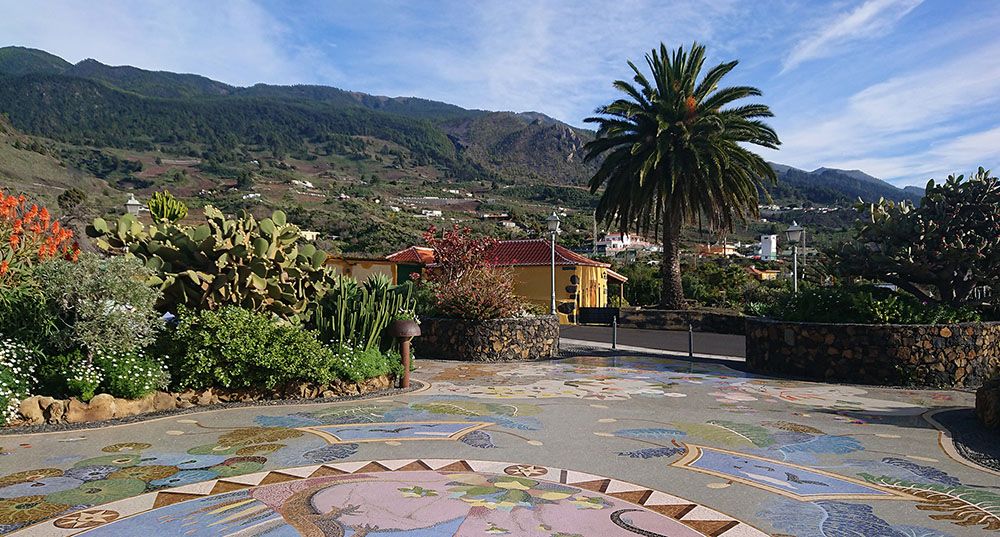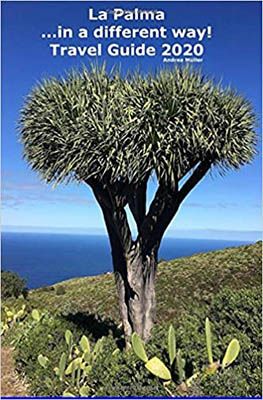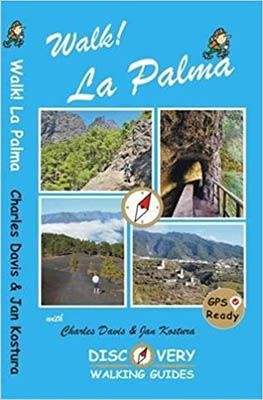Although all the Canary Islands are special, La Palma in particular has won over our hiking hearts. “La Isla Bonita” (the beautiful island) offers stunning, volcanic landscapes stretching above the clouds. Spectacular hikes are there both in the mountains and in the wooded valleys.
La Palma has been declared a UNESCO World Biosphere Reserve. More than a third of the island is a protected nature reserve. The biggest attraction is the National Park Caldera de Taburiente. With a diameter of 10 kilometres, the Caldera is one of the largest erosion craters in the world. In some places, the steep mountain walls tower 2,000 metres above the bottom of the crater.
The highest point of the island is the Roque de los Muchachos, which is over 2,400 metres high. Above the “sea of clouds” you find an observatory. Thanks to its particularly clear and stable atmosphere, the mountain top is considered one of the best places in the world for stargazing. This makes La Palma not only the first ‘Starlight Reserve’ in the world but in 2012 the island was also recognised as a Starlight Tourist Destination.
There is more to see, however, than just stars and extraordinary hiking trails. So, in this blog, we will also take you to the picturesque capital of Santa Cruz.
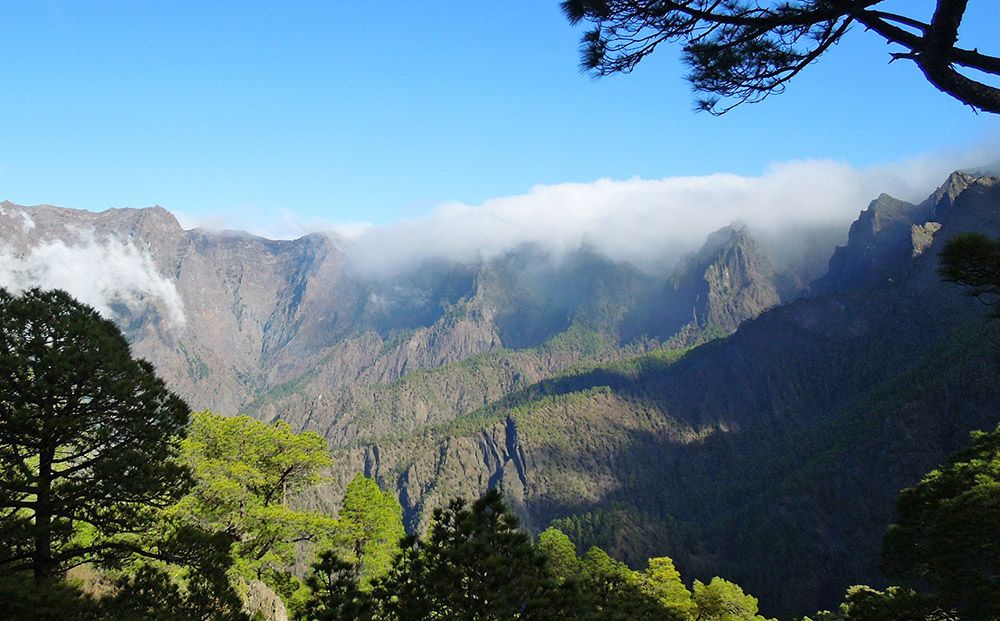
Hiking on La Palma
We just can’t say it often enough: La Palma is truly a paradise for hikers! The island has more than 1,000 kilometres of marked out hiking trails. The network of hiking trails consists of 2 long-distance paths (red routes), 38 short hiking routes (yellow routes) and 24 local routes (green on the hiking map). You will find descriptions of the hikes on the Cabildo La Palma website. You can also download a map of La Palma with all the routes.
Although we did not do it ourselves, you can also do multi-day treks. For instance, there is the GR130 trekking route which runs all the way round La Palma. The route mainly goes along the historical donkey paths. Expect to be hiking for more than a week. A shorter, multi-day trek is GR-131 (El Bastón). This three-day trek takes you through five different climate zones. A popular part of that route is the part over the ridge of the Caldera de Taburiente. The views are genuinely spectacular.
We have made a selection of three of our favourite day hikes. Two of them are part of the three-day GR-131 trek.
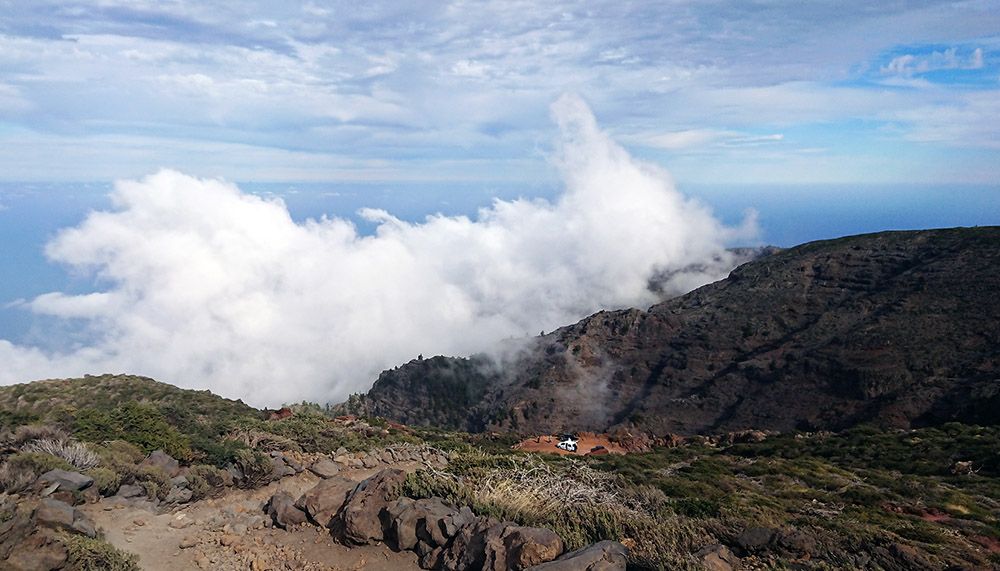
Caldera de Taburiente (PR LP 13)
The trail to the heart of the Caldera is perhaps our biggest favourite. We have hiked it several times. Officially, the hike starts and ends in Los Llanos, but if you do that, it will take you up to ten hours to walk the 26 kilometres. This is why most hikers (like us) only do part of the trail. You park your car in Los Llanos, then let a taxi shuttle take you to the Los Brecitos viewpoint. From this point, the walk is 16-kilometres long. It will take about 5 hours.
From here, an incredibly beautiful trail leads through pine forests to the Crater. You continue the descent through the Barranco de las Angustias (‘Ravine of Fears’). Along the way, you can cool down in the water of a stream and a small waterfall. Another nice detail: the Spanish conquerors gave the ravine this name. They felt threatened by the stone avalanches that the goat herders created from above. >> More information.
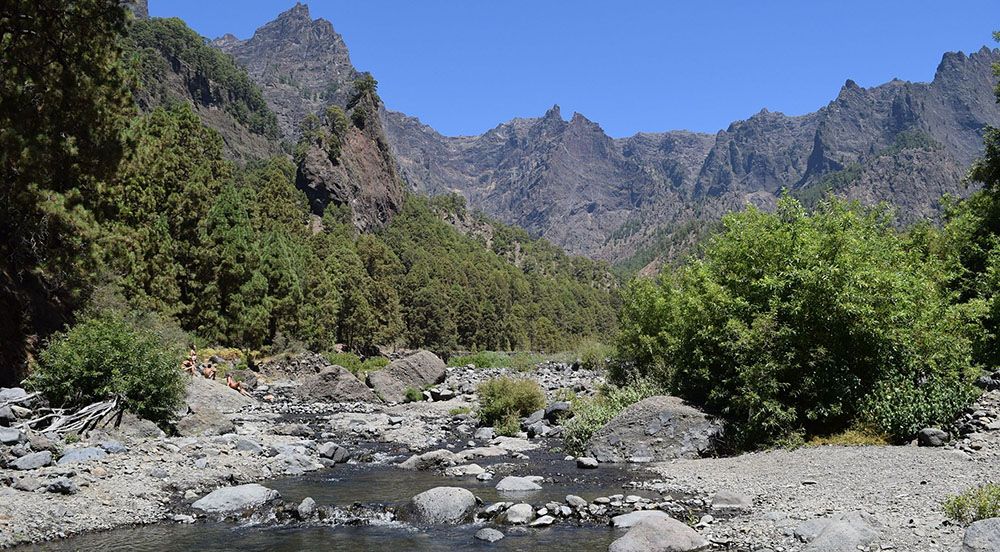
From Roque de los Muchachos to Pico de la Nieve (part of the GR 131)
This beautiful hike is part of the second stage of the GR 131 trail. You can, of course, also hike the entire second stage of 26 kilometres. We only did the part to Pico de la Nieve and back. Park your car at Roque de los Muchachos, the highest point of the island. From here you walk over the edge of the caldera to the southeast.
During the fairly easy walk you will be continuously treated to the most amazing views. Especially if it is cloudy in the east of La Palma, this is the hike to do. Thanks to the high mountain tops, you will get a view of a beautiful white sea of clouds. You can also often see the neighbouring islands like Tenerife. >> More information.
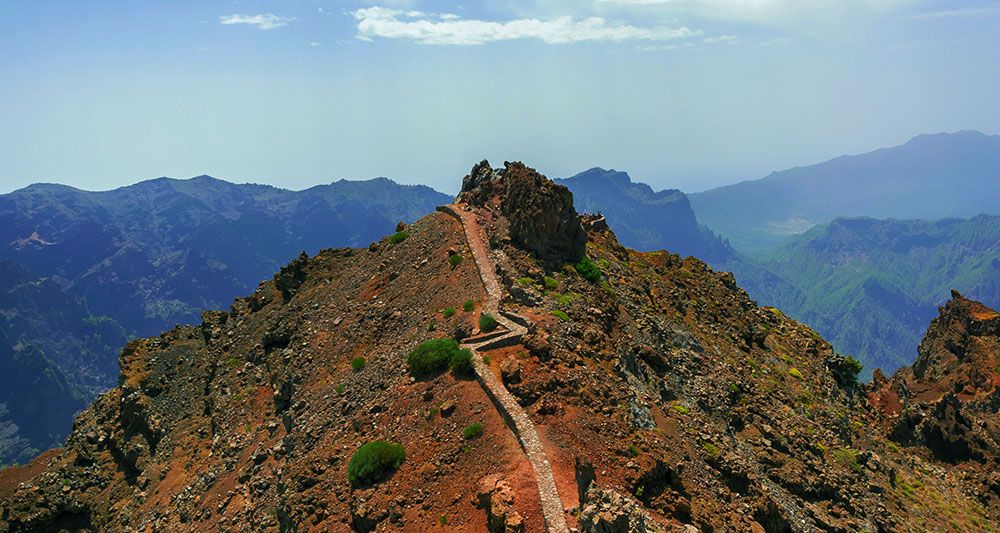
Ruta de los Volcanes (3rd stage of GR 131)
The volcano route is a hike you have to do on your hiking holiday. Unless you’re there in summer or winter! It can be too muggy or cold then. We did the hike in the month of March and enjoyed every minute of it.
The trail leads through a unique volcanic landscape with a rainbow of colours. You trek across the volcanic mountain ridge that divides the south of the island into an eastern and western part. Here too, you get views of a sea of white clouds and the neighbouring islands.
The fairly tough hike starts in El Pilar. You start with a slight climb via the Hoyo Negro to La Deseada, the highest point. From there it goes down all the time until you finally arrive in Fuencaliente. Most hikers, however, walk up to Los Canarios. You would then take the bus or taxi back to where you parked your car. >> More information.
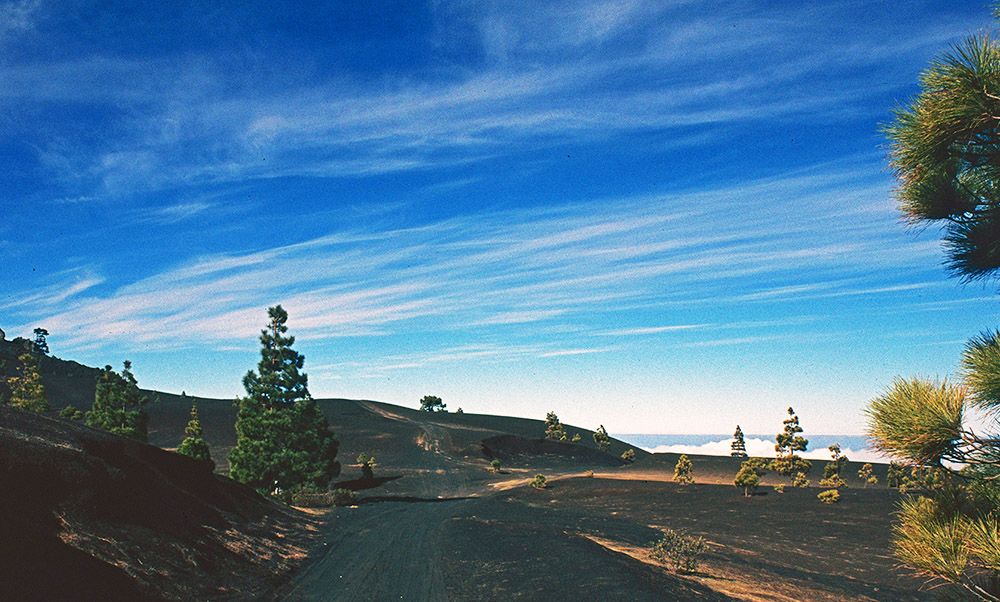
Santa Cruz
Santa Cruz de la Palma is one of the most beautiful cities in the Canary Islands. In the picturesque city centre, you can easily spend a day enjoying yourself. Many of the historic buildings have been neatly preserved. In the old colonial town, you will find narrow streets, houses with colourful, wooden balconies, small squares and many interesting sights. In addition, there are numerous cosy terraces to end the day.
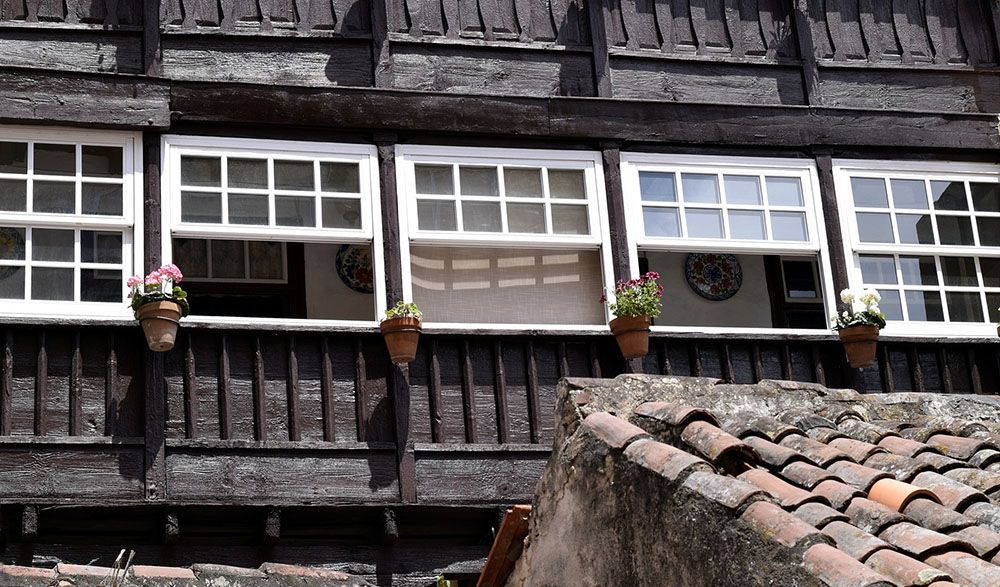
Walking holiday on La Palma: practicalities
These practical tips will help you to prepare for your walking holiday on La Palma:
Best travel time
La Palma has spring-like winters and not too hot, dry summers. This makes the island a wonderful holiday destination in all seasons. If you come here mainly to go hiking, go during the winter months. It is not too hot in that period but you do have a greater chance of a rain shower. April is considered the best month for hiking. You have less chance of rain then and it is not too warm.
Transportation on the island
We find that a rental car is the most ideal option for exploring the island, as well as for getting to the most beautiful hikes. The costs are even lower than renting a scooter or e-bike. You can hire a car from Sunny Cars, for example.
You can also take public transport, which is well organised on La Palma. The bus drives all over the island and is usually on time. What’s more, the bus ticket is very cheap.
Accommodation on La Palma
.
There is no mass tourism on La Palma. There are no large hotels with their own beaches. For a real beach holiday, the neighbouring Gran Canaria and Tenerife are popular. Nevertheless, there is a lot of accommodation to be found on La Palma. The offer varies from homestays and B&Bs to hotels, flats and holiday homes.
We usually stay in one of the many idyllic cottages on the island ourselves. Just somewhere in a small village. And with a fantastic view of the ocean and the rugged, mountainous interior. On Casamundo you will find a large overview of available cottages.
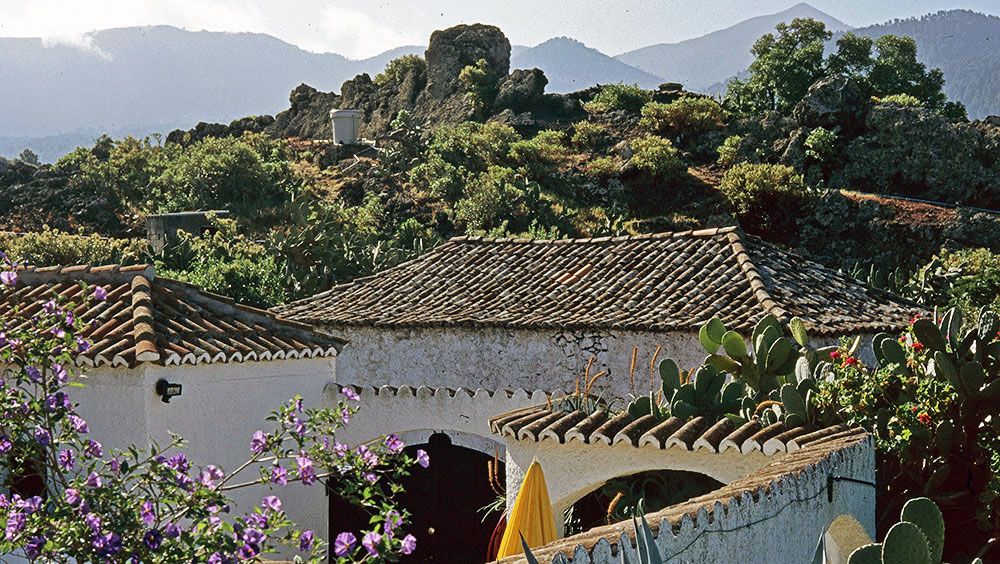
Eating and drinking on La Palma
Of course, you can take care of your own meals in your own flat or cottage. But eating out in one of the many good restaurants on La Palma has its charm too. To enjoy the pleasant atmosphere, the local cuisine and often the beautiful views. That’s why we alternate regularly between cooking and eating out.
On the island you will find international cuisine, ranging from Thai and Italian to Canarian. The local cuisine usually includes a hearty soup as a starter. The main meal consists of a good thick chunk of fish or meat. The dessert is sweet. The locals enjoy plenty of (delicious) wine with the meal.
If you want to eat out, these are the favourite addresses of true connoisseurs of La Palma: Tasca Catalina (Mediterranean), La Casa del Volcan (Spanish), Cerveceria Isla Verde (Mediterranean), El Jardin de la Sal (international) and Enriclai (Mediterranean).
Many of the wines served on La Palma come from the island itself. The vineyards on La Palma date back to the 15th century. The fertile volcanic soil makes winegrowing very successful. Today, the green island has many small vineyards scattered among the banana plantations. Mainly young wines are produced here.
